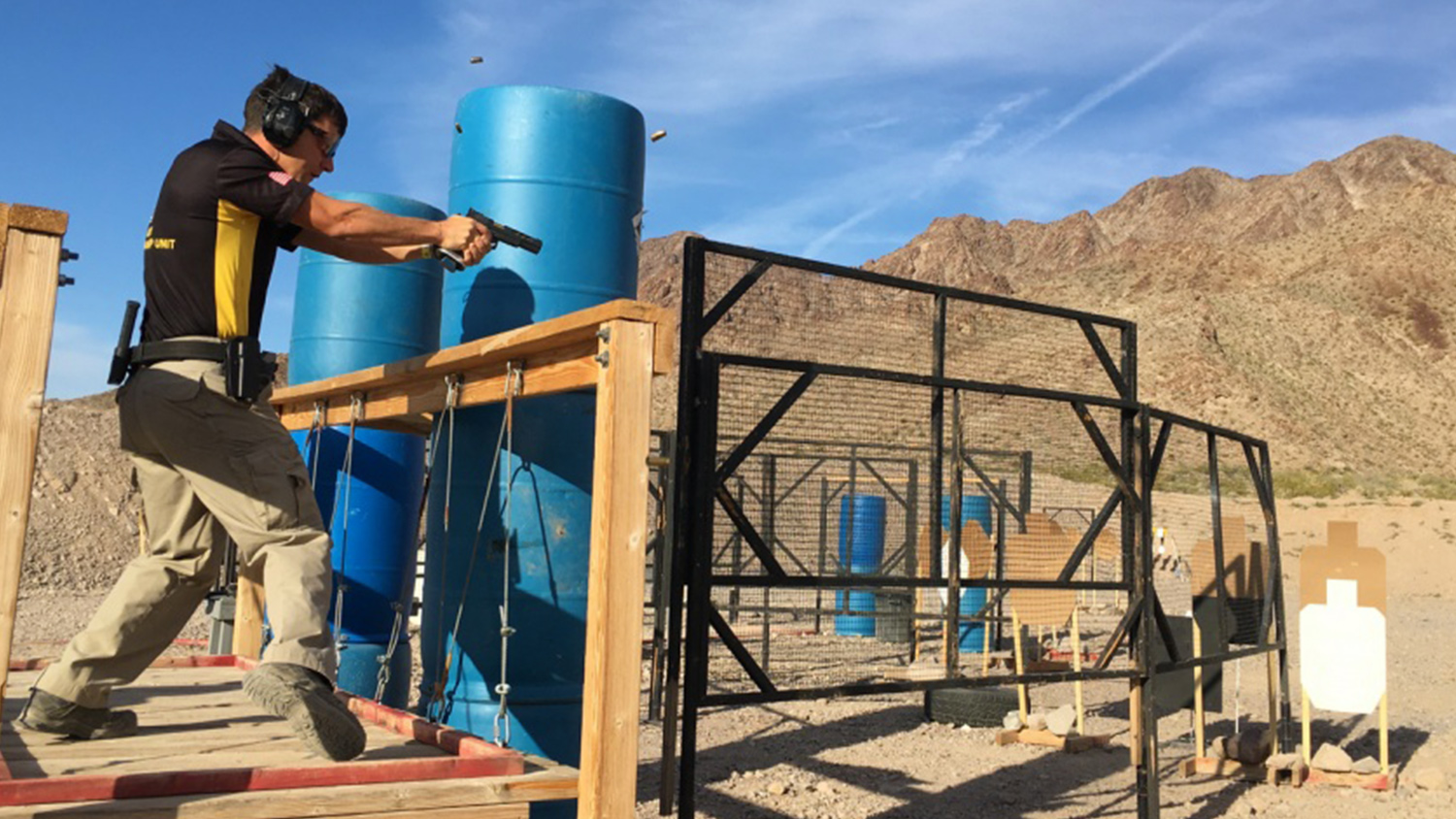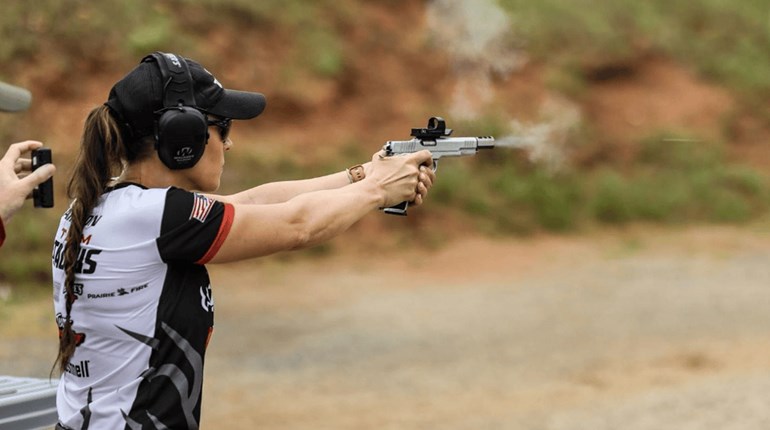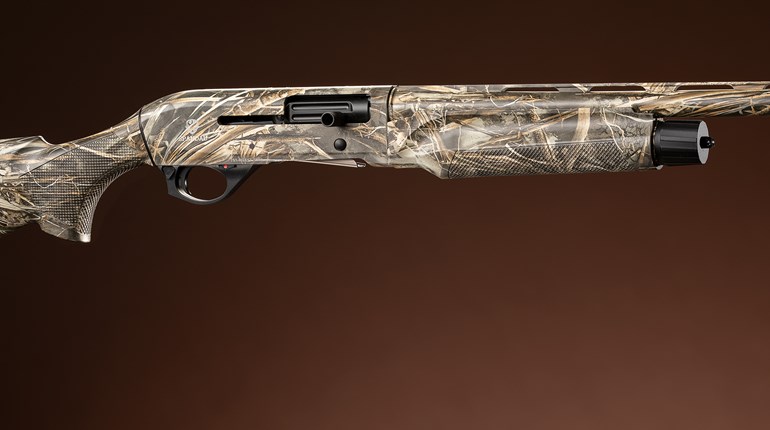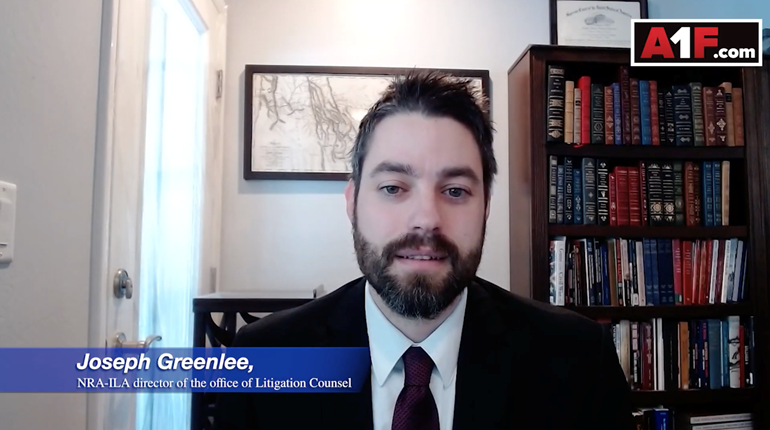
The first win in Vegas is exciting. The third win is a charm. But by the 10th win, it is just down right impressive.
This was the scene at the 2018 U.S. Practical Shooting Association (USPSA) Multigun Nationals where the U.S. Army Marksmanship Unit’s (AMU) Action Shooting Team claimed their first, third and 10th USPSA National title at the Pro Gun Club in April.

The competition had 268 athletes from across the United States test their marksmanship skills in a three-day, 14-stage match that included pistol, rifle and shotgun elements. Additionally, the timed, obstacle-like stages required competitors to accurately fire off at least 200 pistol, 212 rifle, 112 birdshot and 12 slug rounds at targets of various distances, heights and sequences.

In his first year, the AMU’s PV2 Nathan Staskiewicz won the Limited Division Championship. Before joining the Army, the Omaha, NE, native had spent the past few years training, competing and winning in several regional and state matches as a civilian in the Tactical Optics Division, which allows for an optic scope on a rifle. The adjustment of competing in the Limited Division with just an iron sight (or single power optic) in a fast moving competition added a bit of a learning curve, but he said he couldn’t be happier with his recent performance.
“It’s super exciting to win Nationals in my first year, shooting Limited for the AMU,” said Staskiewicz.
Shooting alongside teammates was a new, but nice benefit to the Army private. “It was a little different having a team of four guys who I can count on …walking stages with me and finding the best possible plan between the four of us.”
Between the train up, team planning and consistent, penalty-free shooting, Staskiewicz not only won the USPSA National Limited Championship, but he also placed fourth overall with a score of 1157.3229 points and 415.09 final seconds. His teammate Staff Sgt. Tyler Payne pointed out just what an accomplishment like that meant.
“Not only did he win Limited, but he was fourth overall,” said Payne. “That’s a pretty impressive feat—that’s fourth over all the Open shooters, the Tactical Optic shooters ... I don’t know if it’s been done before, but it’s pretty impressive.”
Of course, Payne, who has been on the AMU Action Shooting Team since 2010, made some standout accomplishments of his own. The Princeton, MN, native racked up a third consecutive USPSA Heavy Metal Division Championship this year with a score of 976.3222 points and 505.14 final seconds.

However, Payne said it wasn’t an easy win since he’s been spending a majority of his time training and competing in bolt gun and Precision Rifle Series (PRS) matches.
“Coming from shooting a lot of bolt gun and PRS, and then back into the 3-gun world, it’s a massive change of [skillsets] … so I really had to start shooting my pistol hard again this year,” he said.
Payne, who deployed to help establish a marksmanship training program for the Afghanistan National Army in 2012, had to pull from his own training, rely on his team for support and push away the nerves to succeed.
“About halfway through the first day, I was kind of wondering what I got myself into this year, but it worked out well. I had a really good team to help coach me through it—that helped a lot,” Payne continued.
Soldiers collaborating on each stage not only helped each to focus on the mission, it also helped them think strategically by mentally mapping out the quickest and highest point routes. The design of the competition this year was mostly straightforward though, said Anderson, South Carolina native Sgt. 1st Class Joel Turner, who placed second in the Open Division against 62 other Open Division competitors and third overall against the total 267.
“It was a tight-necked match due to design. There was nowhere to gain any time, and it didn’t favor any one discipline over another,” said Turner. “It was really just shoot and try to have no penalties … I didn’t think anyone was going to come to this match without getting a penalty, and the guys who won, mostly, didn’t get any. So that was pretty impressive on their part.”
Turner, who has won several Limited and Open Division titles since transferring to the AMU in 2012, including the 2015 USPSA Limited Champion title, knows just how costly those penalties are since he had a technical “miss” at one stage that cost him five seconds, or 22 points. That may not seem like a lot, but when stages average anywhere between 20-30 seconds and points get added by fractions, every little detail matters. But Turner said he knows that all too well since he came in second by only 20 points.
“I basically shot a miss and it cost me a National title. I don’t like losing, but it’s just going to make me train harder for next year,” he said.

Shooting penalty free was a definite advantage in this year’s competition as the top competitors were all within close rankings, said Sgt. 1st Class Daniel Horner, who won the 2018 USPSA Tactical Optics Division Championship—10th year claiming it, and his fifth consecutive.
“I came into the last day without much of a lead,” said Horner. “So, I kicked it up a couple of gears on the last four stages and shot, not out of my comfort zone, but pretty quickly. And that is what allowed me to get the extra points I needed.”
Penalties were not the only factors to consider though, said the Suffolk, VA, native. This year’s competition had something new to consider—bonuses. In some cases, earning bonuses was more critical than not getting a penalty when you did the math, according to the multigun champion Soldier who claimed his National title over 165 other Tactical Optic Division competitors with zero penalties, 20 bonuses, 1288.0839 points and 369.35 final seconds. This score also earned him firstplace overall, beating out the other 267 competitors.
Though earning a 10th USPSA National Tactical Optic Championship was a personal goal that he was excited to achieve, Horner said his preparation for this match was no different.
“I come at all of them the same way. It doesn’t matter if it’s a small match or a big match. It’s all the same amount of preparation and the same amount of effort. It’s done the same way because I want the same results.”
The consistent effort clearly paid off at this competition and is reflected in his accomplishments: five World Multigun Championships, two International Sniper Championships, a U.S. Army Special Operations Command Sniper Championship, the NRA World Shooting Championship, five Mammoth Sniper Championships and the 2008 Army Soldier of the Year runner-up.
With all those wins under his belt, Horner is eager to share his experience and frequently helps train service members from across the Department of Defense, alongside others in the unit.

However, he is also willing to offer some marksmanship advice to civilian competitors, and that all starts with getting a good zero.
“That will make you more successful than any other singular thing,” Horner said. And after getting an accurate zero on all guns, Horner said the next few steps to success are a lot of practice, having fun and staying in your comfort zone.
“Make sure you feel comfortable with what you can do, and just do that. Don’t worry about what anybody else does. Just go out there and do the best you can, and have fun doing it. Because, if you enjoy it, you will do it more and you will get better and be more successful,” he added.
Success is great and Horner knows it well. However, watching his teammates claim National titles and top spots beside him was icing on the cake.
“It was so awesome seeing the guys do well. Everybody works so hard and helps each other out. [It’s] cool to see all the stuff we’ve done over the last few years … and see it all come together. I enjoy seeing them win a thousand times more than I enjoy winning myself.”


































